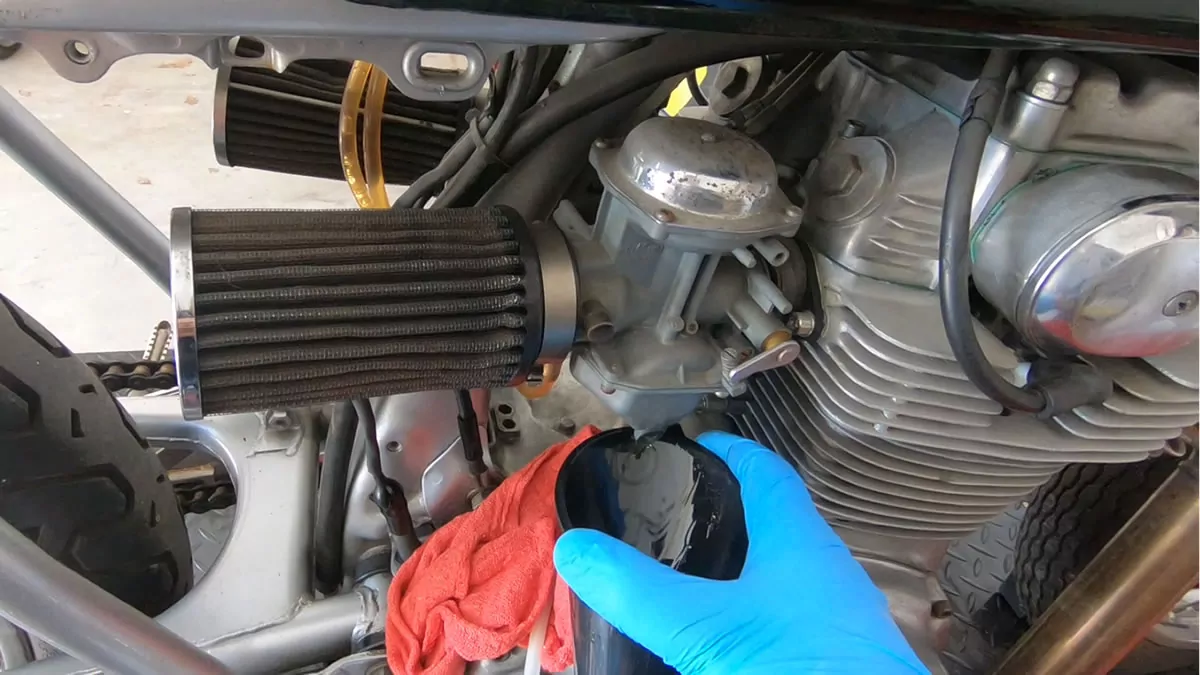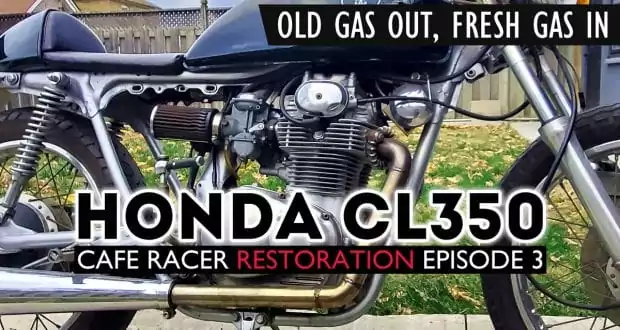In spring of last year I picked up a 1973 Honda CL350 café racer that had been a beautiful bike at least twice in it’s lifetime, but had been sitting forgotten and neglected ever since. My goal was to rescue this sweet little Honda CL-350 café racer and get her running and roaring again.
In Part 1 we looked the bike over to determine what kind of shape she was in to establish a plan of action. In Part 2 we started with the bleeding the front brakes because if we’re going to get her to start and run, we should at least make sure she can stop.
In Part 3 of the series, we’ll be sucking as much of the old gas out of the tank as we can, and draining the rest through the carburetors.


What we used
Lifting a motorcycle tank full of gas can be heavy, awkward, and you can risk making a mess and ruining your clothes or the tank. Whenever possible, I always prefer to drain a motorcycle’s gas tank by siphoning gas out, and draining anything leftover from the carburetors.
To complete the task, I used:
- Battery powered fuel transfer pump
- Hand powered fuel transfer pump
- Black Widow motorcycle table lift from DiscountRamps (full review here)
- Flathead screwdriver
Draining the gas tank
The first thing I tried to drain the old gas was to pull out a battery powered fuel pump. I bought a battery powered fuel transfer pump because I used a regular hand powered transfer pump so often that I thought, “Man, this could save me a lot of time!” versus hand pumping. The battery powered pump promised to siphon out 2.4 gallons per minute, or about 8.5 liters per minute.
Unfortunately, it didn’t work out like that. Admittedly, I tried the battery powered fuel transfer pump both ways because I wasn’t sure just how exactly it was supposed to work. Both yielded limited results. It was time to go back to old faithful.
I took out my trusty hand powered fuel transfer pump. Before long I realized that my hand pump wasn’t siphoning any gas either. I pulled out the hose and it was dry. That told me what was wrong: The fuel tank was already almost empty!
I suspect what happened was that the motorcycle ran out of gas on the previous owner’s way home, and she couldn’t get it to kick over after that, and it stayed there, sad, forgotten, and empty inside for years since.

Draining the carburetors
Time to drain the carburetors. Switching the petcock to reserve I was able to get between one to two liters of gas out of the carbs. The gas was very orange, which probably reflected the shape inside of the gas tank was in.
Refilling the tank
I refilled the gas tank with 1.3 Gal (about 5 liters) of fresh 91 octane gasoline. My hopes were that the carburetors wouldn’t be gummed up, and that with some fresh gas, clean spark plugs (from Episode 1 of the series), and a new battery, the little CL-350 would kick over…
AND IT FIRED UP!
You can hear it towards the end of the video above, but I suggest coming back for next week’s episode where I’ll be taking the 47 year old motorcycle for a test ride.
Update: See Part 4 of the series, where I get the CL350 running again finally!
 YouMotorcycle Motorcycle Blog – Motorcycle Lifestyle Blog, MotoVlog, Motorcycle Reviews, News, & How-Tos
YouMotorcycle Motorcycle Blog – Motorcycle Lifestyle Blog, MotoVlog, Motorcycle Reviews, News, & How-Tos
